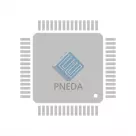Intelligent future: Application interpretation of NPU, FPGA and ASIC in the field of AI chips

Today, with the rapid development of artificial intelligence technology, dedicated hardware architecture plays a crucial role in improving computing efficiency, reducing energy consumption, and accelerating the learning and reasoning process of artificial intelligence models. NPU (neural network processor), FPGA (field Programmable gate array) and ASIC (application-specific Integrated circuit) are the three major hardware architectures in the field of AI chip design today, each with different characteristics and application scenarios, promoting the innovation and development of intelligent technology.
NPU (Neural Network Processor)
NPU is a processor designed to speed up neural network computing. Compared with traditional cpus and Gpus, Npus have higher computing power and energy efficiency when processing specific AI tasks. Npus typically use massively parallel processing architectures that can handle a large number of operations simultaneously. If it is the accelerated calculation of the convolutional layer, the NPU can be improved by special hardware units to improve the processing speed.
In practical applications, NPU is suitable for image recognition, speech recognition, natural language processing and other fields. For example, in smartphones, the A070UD30LIlOO chip equipped with NPU can achieve real-time image enhancement and face recognition functions to improve user experience. In addition, in offline inference and edge computing scenarios, the advantages of NPU are becoming more and more obvious, which can process data locally on the device, reduce latency and bandwidth requirements, and improve security.
Npus also benefit from their flexibility and adaptability, with many supporting multiple AI frameworks, such as TensorFlow and PyTorch, which developers can leverage to quickly build and deploy their own AI models. Through continuous optimization of algorithms and architectures, NPU is able to find the ideal balance between computational efficiency and power consumption.
Field programmable gate array
Fpgas are highly flexible integrated circuits that allow users to configure and program them according to their specific needs. Unlike Npus, FPgas' programmability enables them to adapt to rapidly changing algorithms and emerging applications, especially where rapid validation and iteration are required.
During AI training and reasoning, FPgas can dynamically configure logical units based on specific AI models to optimize the computation path. Some companies are already accelerating deep learning through FPgas, allowing developers to adapt to new AI algorithm requirements without replacing the hardware.
Fpgas are particularly suited for delay-sensitive applications such as autonomous driving, financial algorithmic trading, and industrial automation, providing extremely low latency and high throughput. In the data center, fpga is also widely used to accelerate data analysis and real-time reasoning through data stream processing, which greatly improves the overall verification efficiency of the system.
In addition, the reconfigurable nature of FPgas can extend their useful life, and as new technologies and requirements emerge, they can be reprogrammed to support new algorithms, avoiding the problem of hardware obsolescence. At the same time, the parallel computing capability of FPgas can also effectively reduce energy consumption, which is particularly important for some edge devices with limited power supplies.
Application-specific integrated circuit
Asics are integrated circuits designed for specific applications, especially in the field of artificial intelligence, and the performance advantages of ASics cannot be ignored. Compared to general-purpose processors, ASics can provide excellent energy efficiency and compute performance through highly optimized architectures, especially in large-scale deployments.
In the reasoning phase of deep learning, ASics are capable of processing trillions of operations per second (TOPS) and are widely used in large cloud computing platforms, smart cities and autonomous vehicles. In addition, because ASics can specialize in optimizing specific algorithms and operations, such as convolution and matrix operations, it is highly efficient when dealing with complex AI tasks.
Despite the high development cost and time of ASics, due to its advantages in high-performance computing, many technology companies (such as Google) have adopted ASIC architecture in products such as TPU (Tensor Processing Unit). TPU is an ASIC optimized for deep learning inference and training, which can significantly improve the training speed and inference efficiency of models.
The high energy efficiency of ASics also makes them ideal for large data centers. In environments where thousands of volumes of AI models need to be run, ASics can significantly reduce power consumption and save operational costs.
Application scenario comparison
1. Advantages of NPU: In consumer electronic products such as smart phones and home devices, NPU provides real-time image and voice processing capabilities to support the development of various intelligent applications.
2. Flexibility of FPGA: In scenarios that require frequent updates and iterations, such as financial algorithms and intelligent manufacturing, FPgas can quickly adapt to changing business needs and reduce waiting time.
3. Efficiency of ASics: In cloud computing and large-scale AI training scenarios, ASics become the best choice with their strong performance and energy efficiency ratio, especially when processing massive data.
The continuous development of various hardware architectures makes the application of AI technology more extensive, and users can choose the right hardware platform according to different needs, so as to achieve more efficient calculation and more accurate results. With the continuous evolution of technology, the role of NPU, FPGA and ASIC will continue to enrich and play an increasingly important role in the future of intelligent technology.
您可能感興趣的產品
 |
PNVT012A0X43-SRZ | MODULE DC DC CONVERTER | 8478 More on Order |
 |
APTH006A0X4-SR | DC DC CONVERTER 0.6-3.63V 22W | 7164 More on Order |
 |
AXH010A0P-SRZ | DC DC CONVERTER 1.2V 12W | 8658 More on Order |
 |
QRW025A0A71-H | DC DC CONVERTER 5V 125W | 2394 More on Order |
 |
QRW025A0A1Z | DC DC CONVERTER 5V 125W | 8046 More on Order |
 |
QRW040A0Y1-P | DC DC CONVERTER 1.8V 72W | 6012 More on Order |
 |
QRW040A0Y1 | DC DC CONVERTER 1.8V 72W | 8712 More on Order |
 |
QRW010A0B71-H | DC DC CONVERTER 12V 120W | 3744 More on Order |
 |
QPW060A0G1 | DC DC CONVERTER 2.5V 150W | 5850 More on Order |
 |
MW005BK | DC DC CONVERTER +/-12V 5W | 2862 More on Order |
 |
LW015A9 | DC DC CONVERTER 5V 15W | 8928 More on Order |
 |
JW075F | DC DC CONVERTER 3.3V 50W | 4158 More on Order |
 |
JHW050FY1 | DC DC CONVERTER 3.3V 1.8V 50W | 8838 More on Order |
 |
ATH016A0X3 | DC DC CONVERTER 0.8-3.6V 58W | 2646 More on Order |
 |
QBDW033A0B41-PHZ | DC DC CONVERTER 12V 400W | 5382 More on Order |
 |
ESTW006A0B41-HZ | DC DC CONVERTER 12V 72W | 7650 More on Order |
 |
NSR020A0X43Z | DC DC CONVERTER 0.6-6V 120W | 7182 More on Order |
 |
SSTW001A3B41-SRZ | DC DC CONVERTER 12V 15W | 4626 More on Order |
 |
APTS003A0X-SRDZ | DC DC CONVERTER 0.6-5.5V 16W | 4752 More on Order |
 |
GDT080A0X3-SRZ | DC DC CONVERTER 0.6-2V 80A | 6132 More on Order |
 |
UDXS0606A0X3-SRZ | DC DC CNVRTR 0.6-5.5V 0.6-5.5V | 6192 More on Order |
 |
ESTW004A2C41-HZ | DC DC CONVERTER 15V 63W | 6156 More on Order |
 |
KHHD015A0F41Z | DC DC CONVERTER 3.3V 50W | 16644 More on Order |
 |
SHHD003A0A4Z | DC DC CONVERTER 5V 15W | 17916 More on Order |









